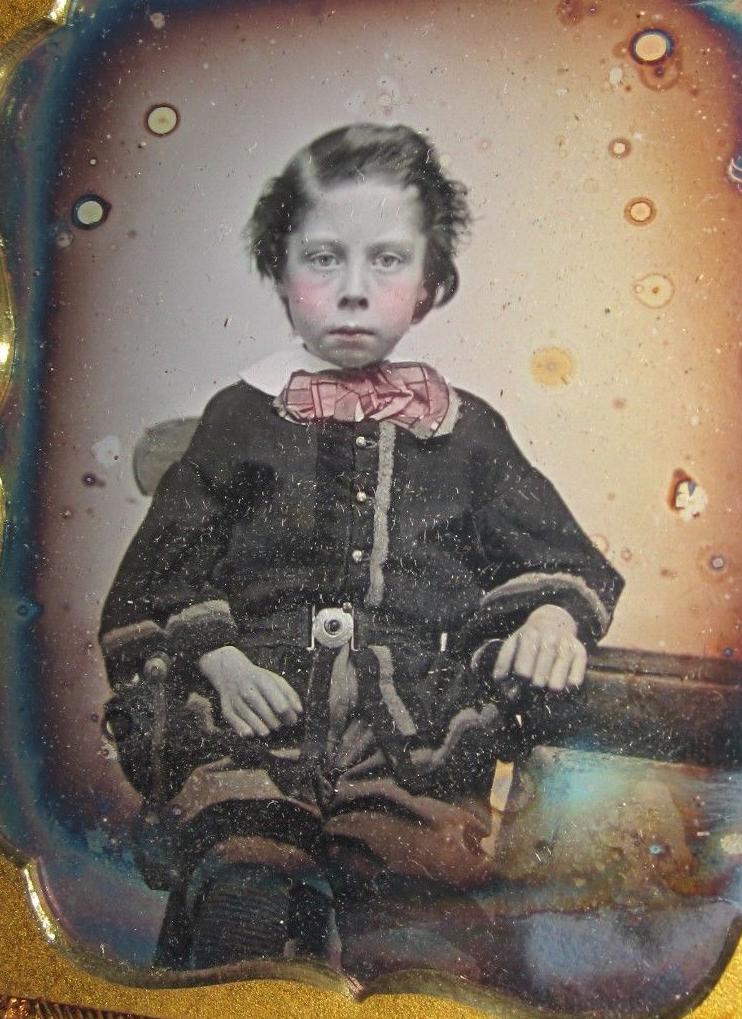
Figure 1.--This unidentified Dag shows a boy wearing a front-buttoning tunic suit with a white collar and stock-like bow. Notice the decotarive piping. |

|
European boys in the early-19th century began wearing tunics which eventually began replacing the skeleton suit. These were loose garments wuthout front openings. We do not know much about American tunics, but see them in period illustrations. By the time photography appeared (1840s) we begin to see large numbers of actual examples. The examples we have found as we begin to build the photographic record so far do not look like the European tunics we gave found. Most of the American tiunics we have found in Dags and Ambros are front-buttoning affairs. Some look more like long, colorful flannel shirts worn with a belt. They seem very different than the tunics we see in Europe or those depicted in period illustrations. We see some American tunics that do not look like shirts, but rather sylized tunic outfits, but so far all we have found are front buttoning. Our archive is still limited, but large enough to conclude that most American tunics in the 1850s were front buttoning.
The tunic examples we have found as we begin to build the photographic record so far do not look like the European tunics we have found. Most of the American tunics we have found in Dags and Ambros are front-buttoning affairs. There were different stylistic approaches, but so far all we have found are front buttoning. Our archive is still limited, but large enough to conclude that most American tunics in the 1850s were front buttoning. Many seen to have buttoning only on the top or bodice part of the tunic, not the skirt part.
Many ofthese tunics do not seem to have had collars. Rather the boys worn white collars of varying size, with and without nckwear. Some look rather like Eton collcars, but not as stiff as the classic Enbglish Eton collar. This is often difficult to tell because the neckwear as with the boy here covers most or part of the collar (figure 1).
Some look more like long, colorful flannel shirts worn with a belt. They seem very different than the tunics we see in Europe or those depicted in period illustrations. We see some American tunics that do not look like shirts, but rather sylized tunic outfits. Our basic assessment is that tunics were a popular style, but the more stylish examples were an indicator of a boy from a well-to-do family.
Some tunics had wide sleeves. This seems to be the case here (figure 1). We believe that this reflected fashionable dress styling for women and appears go have influenced tunic styling. We are not entirely sure, but we believe this was fashionable styling about 1850-55. This needs to be confirmed. Unfortunately as so few Dags are dated, it is impossible to date this fashionable dtyling with the Dags that we have collected. We do not see it in the CDV record in the 60s, se we knoe it was an early-mid1850s styles. What we do not know if it was a style popular in the late-40s.
Navigate the Boys' Historical Clothing hair style pages:
[Return to the Main long hair page]
[Return to the Main curl hair page]
[Bangs]
[Ringlet curls]
[Hair bows]
[Caps]
[Collar bows]
Navigate the Boys' Historical Clothing Web Site:
[Return to the Main American tunic 1850s chronology page]
[Return to the Main American tunic 19th century chronology page]
[Return to the Main American tunic chronology page]
[Return to the Main American tunic page]
[Return to the Main American 1850s page]
[Introduction]
[Activities]
[Biographies]
[Chronology]
[Clothing styles]
[Countries]
[Topics]
[Bibliographies]
[Contributions]
[FAQs]
[Glossaries]
[Images]
[Links]
[Registration]
[Tools]
[Boys' Clothing Home]
